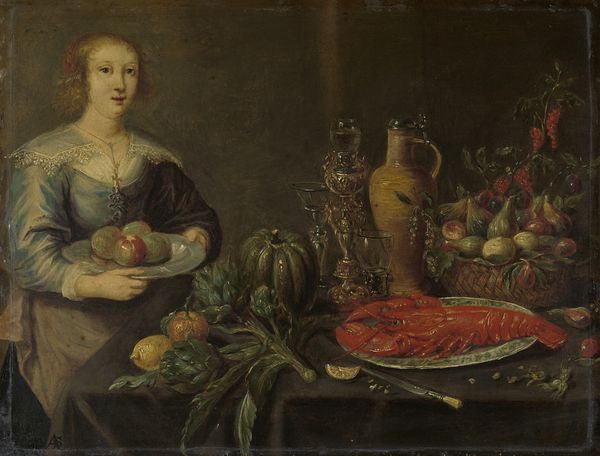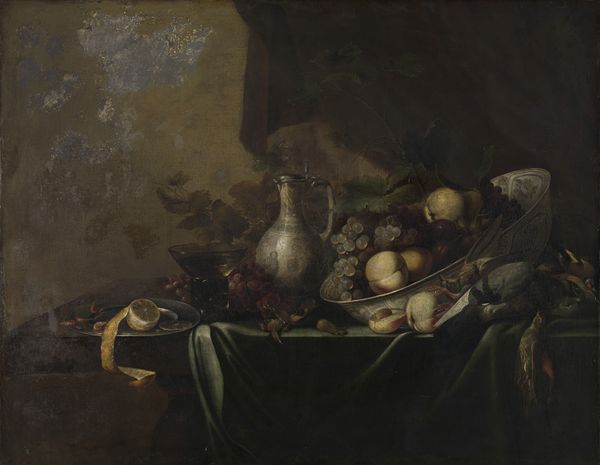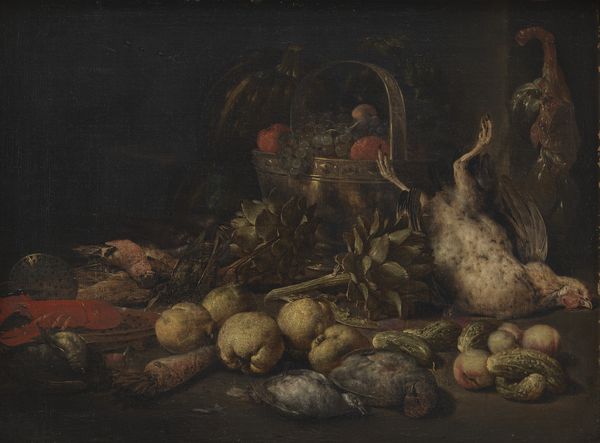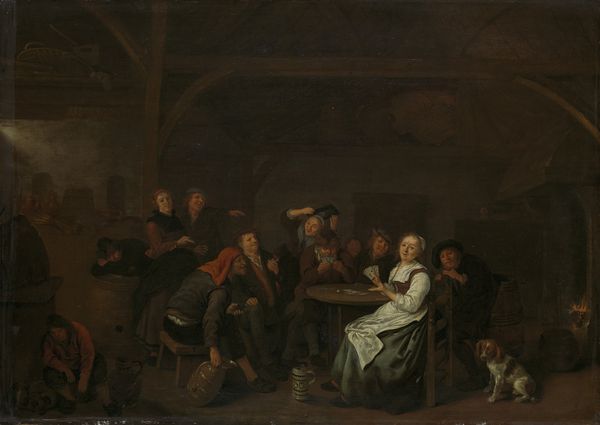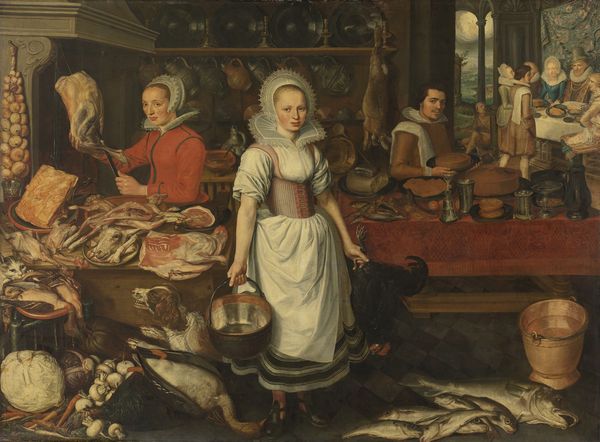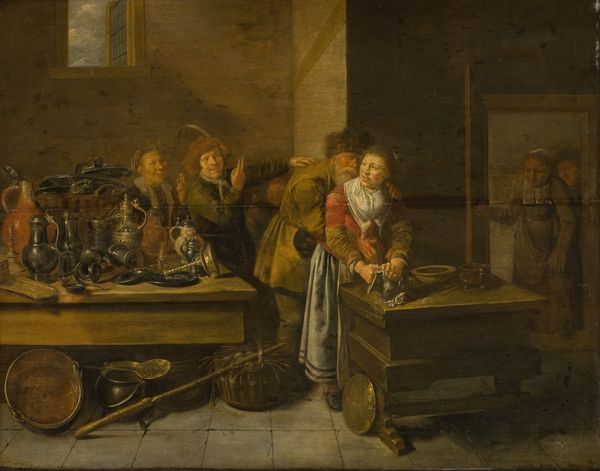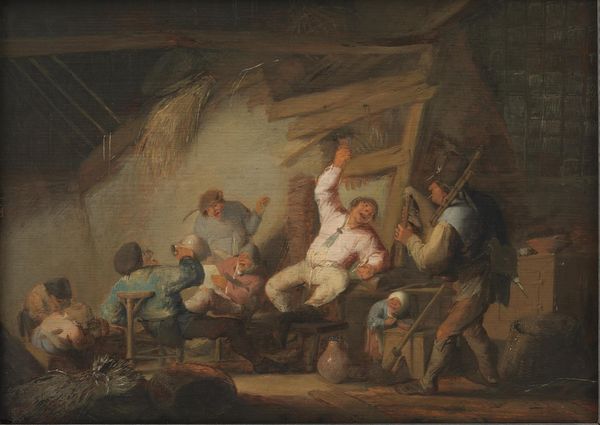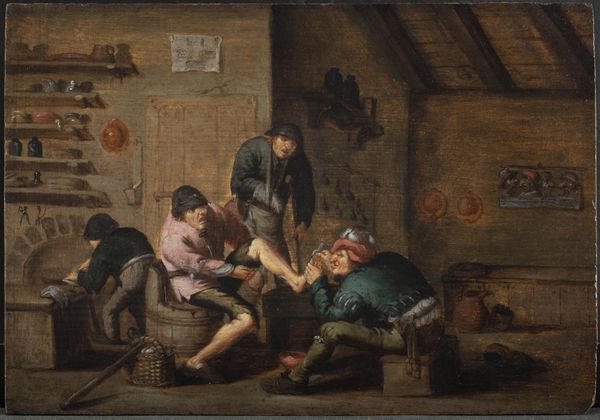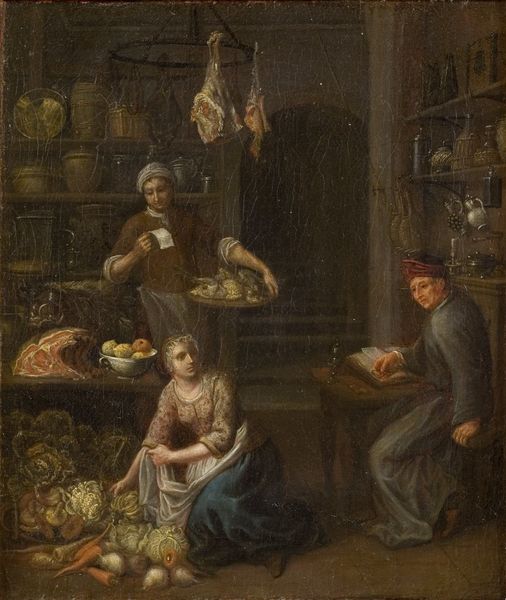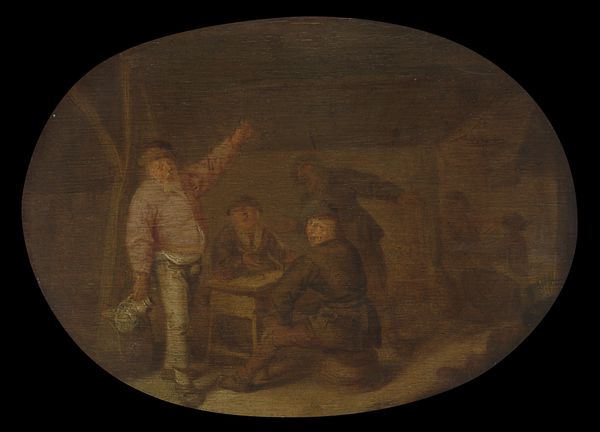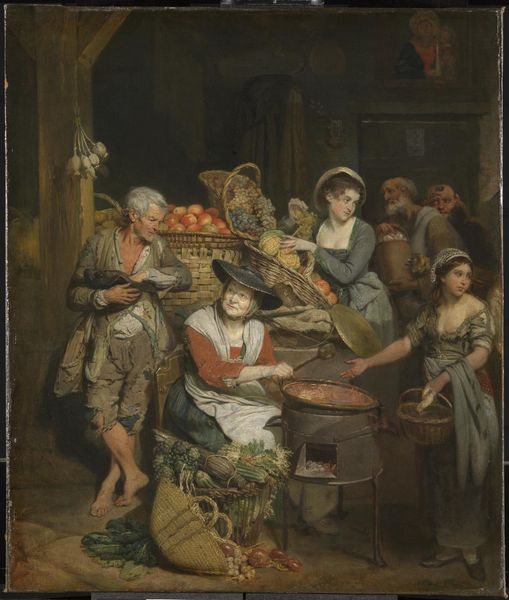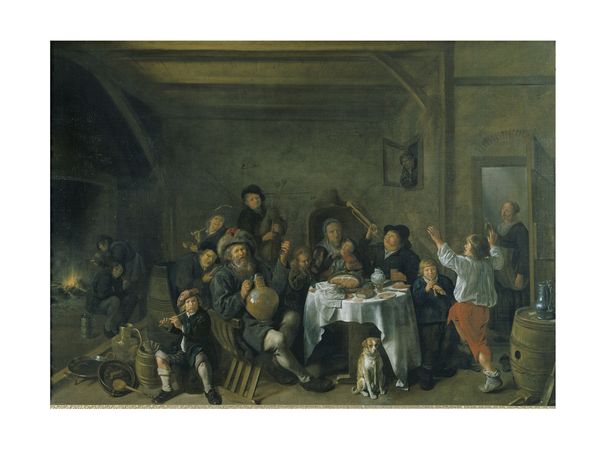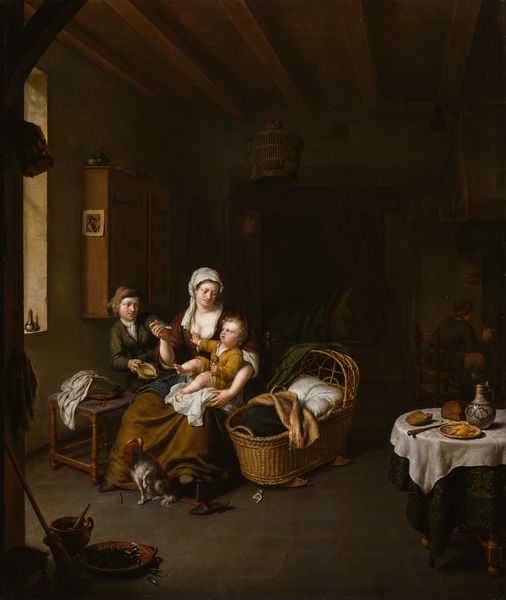
painting, oil-paint
#
baroque
#
dutch-golden-age
#
painting
#
oil-paint
#
genre-painting
Dimensions: height 68.5 cm, width 81.5 cm
Copyright: Rijks Museum: Open Domain
Curator: This is Jan Olis’ "Kitchen Interior," painted in 1645 using oil on canvas. It depicts a rather bustling, if dimly lit, domestic scene. Editor: Yes, a very visceral scene! There’s an abundance of food – game, fish, vegetables… It makes me wonder about themes of social class and labor. What do you see in this piece? Curator: It’s fascinating to consider this 'genre painting' through a lens of gender and labor. We see a woman actively preparing food, presumably for consumption or sale, while a man relaxes with a drink. This division of labor reflects the patriarchal structure of 17th-century Dutch society. Consider who has ownership and access? Who benefits most from the kitchen's production? What power relations are represented? Editor: That's a very important point about division and the ownership of work. I hadn't considered how this everyday scene normalizes specific social roles and unequal distribution. And what about the racial identities here? How are the power dynamics impacted by their race and social status? Curator: That’s a vital question. It’s critical to remember that the Dutch Golden Age was also a period of extensive colonial activity and trade. While the figures in this painting appear to be of European descent, the wealth that allowed for such displays of abundance was often generated through the exploitation and enslavement of people of color in other parts of the world. That invisible labour underpins what is overtly on display here. It prompts us to think critically about how seemingly innocuous scenes can participate in broader systems of power. Editor: So, by exploring social history, we can read "Kitchen Interior" not just as a snapshot of daily life, but as a visual representation of deeply entrenched social hierarchies of gender and race. Thank you, I have new tools to help read visual art through historical events and theoretical frameworks! Curator: Indeed. Understanding these power dynamics is crucial for a deeper appreciation – and critique – of art history.
Comments
No comments
Be the first to comment and join the conversation on the ultimate creative platform.
